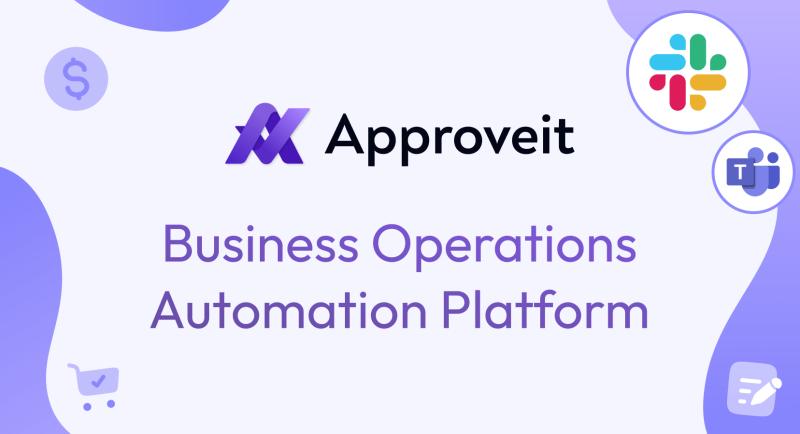
Streamline Your Operations: How to Automate Finance Workflows
The financial landscape is evolving rapidly, and organizations are continuously seeking innovative ways to enhance their operational efficiency. One of the most effective strategies in this endeavor is to automate finance workflows https://approveit.today/finance. By implementing automation in financial processes, businesses can significantly reduce manual tasks, minimize errors, and increase productivity. This article explores the importance of automating finance workflows, the challenges faced during implementation, and best practices to ensure success.
Understanding the Need for Automation in Finance
The finance department plays a crucial role in any organization, from budgeting and forecasting to ensuring regulatory compliance. However, many finance teams are bogged down by repetitive tasks such as data entry, invoice processing, and expense approvals. These manual processes not only consume valuable time but also increase the risk of human error. According to a study by McKinsey, organizations that embrace automation can reduce operational costs by up to 30% and improve productivity by 20%. Therefore, automating finance workflows is no longer just an option; it is a necessity for businesses aiming for growth and sustainability.
Benefits of Automating Finance Workflows
Automating finance workflows brings numerous benefits to organizations, including:
- Increased Efficiency: Automation allows finance teams to focus on strategic activities rather than time-consuming manual tasks. This leads to faster processing times and better throughput.
- Improved Accuracy: Automated systems reduce the likelihood of human errors in financial data entry and calculations, ensuring greater accuracy in financial reporting.
- Real-Time Data Access: Automation facilitates real-time data tracking and reporting, enabling finance professionals to make informed decisions swiftly.
- Cost Savings: By reducing the time spent on manual processes, organizations can lower labor costs and allocate resources more effectively.
- Enhanced Compliance: Automated workflows help maintain compliance with regulatory standards by providing a clear audit trail and ensuring standardization of processes.
Challenges in Automating Finance Workflows
Despite the numerous advantages, several challenges may arise during the automation of finance workflows:
- Resistance to Change: Employees may be hesitant to adopt new technologies, particularly if they have been using manual processes for a long time.
- Integration Issues: Existing systems may not easily integrate with new automation solutions, creating potential bottlenecks in data flow.
- High Initial Investment: Implementing automation technologies can require significant upfront investment, which may be a barrier for some organizations.
- Data Security Concerns: Moving financial processes online necessitates stringent data security measures to protect sensitive financial information.

Strategies for Successful Implementation of Automation
To overcome these challenges and ensure a successful automation journey, organizations should adopt the following strategies:
- Conduct a Needs Assessment: Before implementing automation, assess the specific needs and pain points of your finance team to identify processes that would benefit most from automation.
- Engage Stakeholders: Involve finance staff and other stakeholders in the planning and decision-making process to foster buy-in and reduce resistance to change.
- Select the Right Tools: Choose automation solutions that align with your organization’s goals and integrate seamlessly with existing software and systems.
- Implement Gradually: Instead of a full-scale implementation, consider a phased approach to allow teams to adjust gradually to new processes and technologies.
- Provide Training: Offering comprehensive training and support for staff will help ease the transition and encourage smooth adoption of automated workflows.
Best Practices for Maintaining Automated Finance Workflows
Once finance workflows have been automated, it is vital to maintain and continuously improve these processes. Consider the following best practices:
- Regular Monitoring: Continuously monitor automated workflows for efficiency, accuracy, and compliance. Adjust processes as necessary to adapt to changes in the business environment.
- Stay Updated: Keep abreast of the latest developments in automation technology and be open to adopting new tools that can enhance financial processes further.
- Encourage Feedback: Create a culture of feedback where finance team members can share their experiences and suggestions for improving automated workflows.
- Benchmark Performance: Regularly measure the performance of automated workflows against industry benchmarks to identify areas for improvement.
The Future of Automated Finance Workflows
The future of finance automation holds promising possibilities, driven by advancements in artificial intelligence, machine learning, and data analytics. As these technologies continue to evolve, they will enable even more sophisticated financial processes, such as predictive analytics for budgeting and forecasting, automated fraud detection, and intelligent contract management. Organizations that invest in automation will likely find themselves at a competitive advantage, better equipped to navigate the complexities of the financial landscape.
Conclusion
Automating finance workflows is not just a trend but a fundamental shift that can transform the way organizations operate. By embracing automation, businesses can increase efficiency, improve accuracy, and save costs while providing their finance teams with the tools they need to succeed. Despite the challenges that may arise, the benefits of automated finance workflows far outweigh the drawbacks. With the right strategies and tools in place, organizations can streamline their financial processes and pave the way for future success.